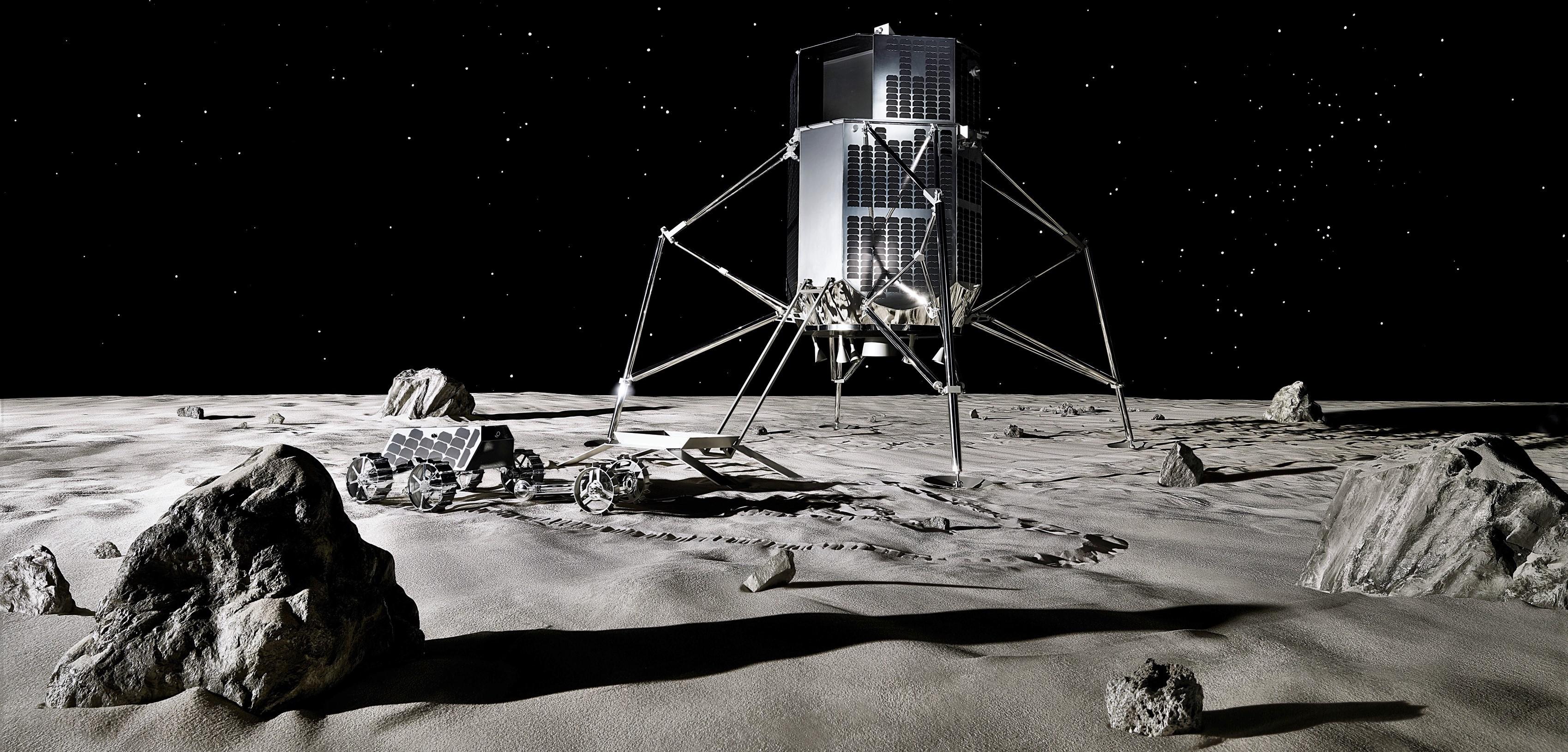

News
SpaceX customer iSpace updates Falcon 9-launched Moon lander, rover plans
Japanese commercial space company iSpace has provided an updated schedule for its first private missions to the Moon, both set to launch on Falcon 9 rockets and land on the Moon as early as 2021 and 2023.
iSpace’s goal is to understand and map lunar resources (particularly water ice) and eventually gather and process those materials into resources that could help enable far more ambitious lunar exploration, up to and including a partially self-sustaining lunar outpost capable of supporting astronauts. Known as Hakuto-R (“white rabbit” reboot), iSpace began as a team pursuing the Google Lunar XPRIZE before its cancelation in 2018 after several postponements pushed competing teams well past the prize deadline.
We also announced an updated mission schedule for the HAKUTO-R Program. We will perform a lunar landing in 2021 and a lunar landing and rover deployment in 2023. https://t.co/jGaZ3eqRRE— HAKUTO-R (@HAKUTO_Reboot_e) August 22, 2019
Despite the death of the Lunar XPRIZE, iSpace managed to not only survive but thrive in a more entrepreneurial environment. The company managed to convince several major investors of the potential value of commercial space exploration and became one of a select few spaceflight startups – certainly the only space resources startup – that has raised almost $100 million.
Relative to similar startups Planetary Resources (purchased by a blockchain company; effectively dead) and Deep Space Industries (acquired by Bradford Space), iSpace is in an unprecedentedly healthy position to realize its space resource ambitions.
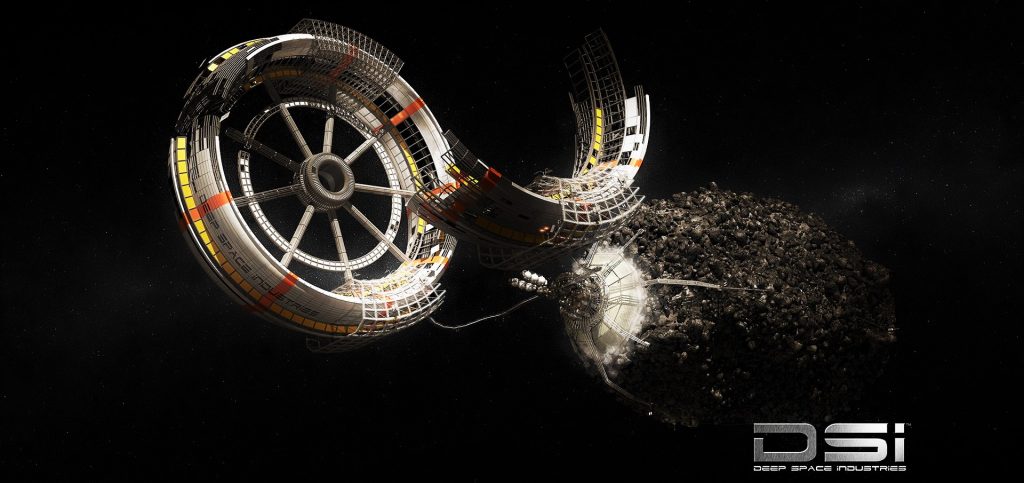
NewSpace, OldProblems
One could likely climb to the Moon with nothing more than a printed stack of all the studies, analyses, white papers, and hollow promises ever published on the utilization of space-based resources, an ode to the simultaneous promise and pitfalls the idea poses. As many have discovered, developing the ability to acquire, refine, and sell space resources is one of the most long-lead problems in existence. Put another way, funding a space exploration company on the promise of (or income from) space resources is a bit like paying for a solid-gold ladder by selling the fruit you needed it to reach.
For such an enterprise to make economical sense, one must either have access to ladders that are cheaper than their weight in gold or be able to sell the harvested fruit at breathtaking premiums. The point of this analogy is to illustrate just how challenging, expensive, and immature deep space exploration is relative to the possible resources currently within its grasp. There is also a bit of a circular aspect to space resource utilization: to sell the resources at the extreme premiums needed to sustain their existence, there must be some sort of established market for those resources – ready to purchase them the moment they’re available.
To build a market on space resources, one must already possess space resources to sell. This is the exact thing that government space agencies like NASA should develop, but entrenched and greedy corporate interests have effectively neutered NASA’s ability to develop technology that might transcend the need for giant, ultra-expensive, expendable rockets.
The need to secure funding via investors – investors expecting some sort of return – is the biggest roadblock to space resource utilization. Really, the only conceivable way to sustainably raise funding for space resource acquisition is to already have a functional and sustainable company as a base. SpaceX is a prime example: the company hopes to fund the development of a sustainable city on Mars with income from its launch business and Starlink internet constellation.
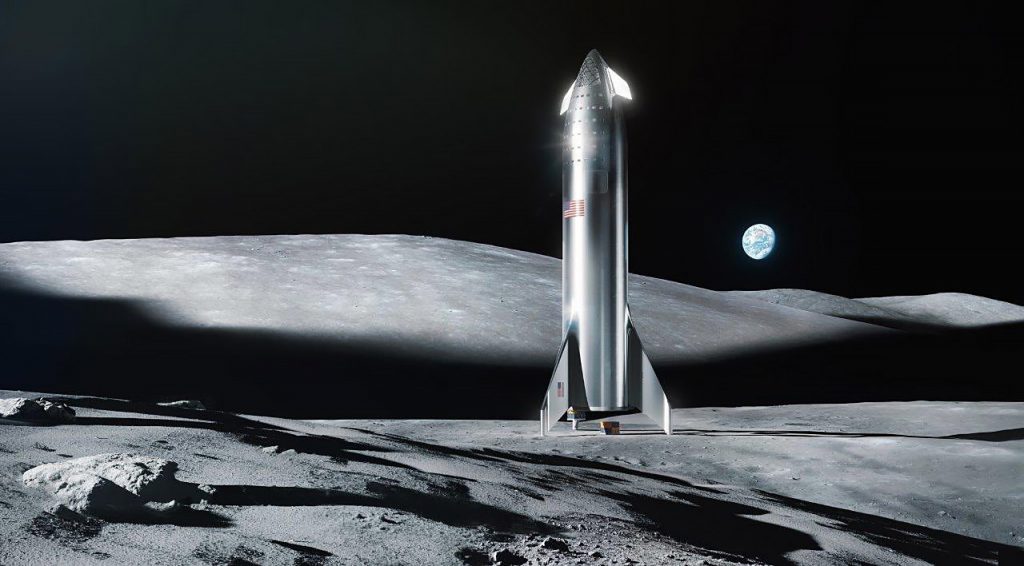
Ambitious plans, solid funding
Given all of the above, it’s extremely impressive that iSpace has managed to raise nearly $100M in just a few years and has done so without the involvement of one or several ultra-wealthy angel investors. Of course, it must still be acknowledged that the cost of iSpace’s longer-term ambitions can easily be measured in the tens of billions of dollars, but given an extremely lean operation and rapid success, $100M could plausibly fund at least one or two serious lunar landing attempts.
In the realm of flight tests, iSpace previously planned to perform a demonstration launch in 2020, in which a simplified lander would be used to orbit the Moon but not land. In the last year or so, the company has decided to entirely forgo that orbital test flight and instead plans to attempt a Moon landing on its first orbital flight, scheduled to launch on Falcon 9 no earlier than (NET) 2021. If successful, this inaugural landing would be followed as few as two years later (2023) by a lander and a lunar rover. Assuming a successful second landing, iSpace would move to ramp its production rates, launch cadence, and general ambitions, prospecting all over the Moon in 5-10+ separate lander missions.
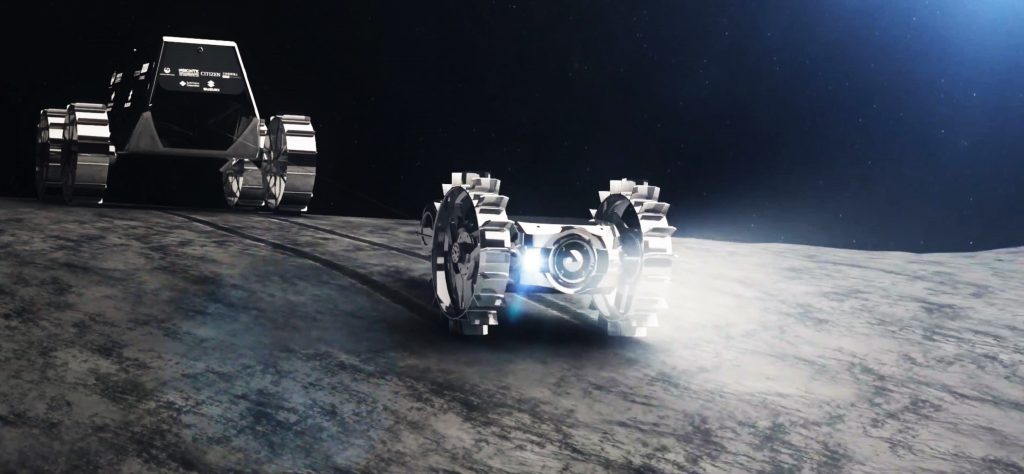
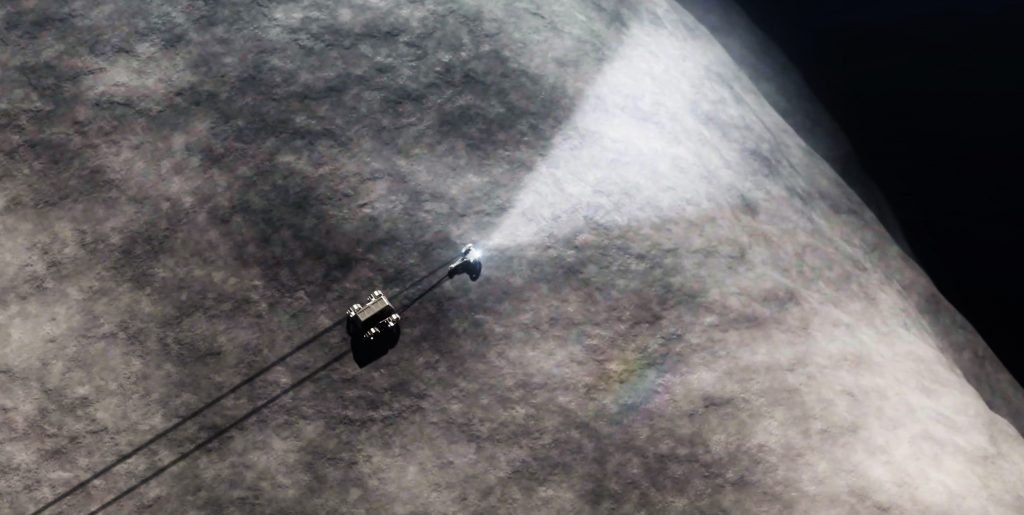
iSpace will still face the brick wall that all space resource companies eventually run into. Even if the company can successfully demonstrate a Moon landing and resource prospecting, it will need additional funding (and thus a commercially sustainable plan to sell investors on) to continue work and eventually, just maybe, get to a point where selling space-based resources can become a sustainable source of income.
Regardless of iSpace’s long-term business strategy, the early 2020s will be jam-packed with attempted commercial lunar landings, including Hakuto-R, Astrobotic, Intuitive Machines, and perhaps several other companies’ attempts. By all appearances, the exceptional mix of high performance and low cost offered by SpaceX’s Falcon 9 rocket will serve as a major enabler, allowing companies to put most of their funding into their landers instead of launch costs.
Check out Teslarati’s Marketplace! We offer Tesla accessories, including for the Tesla Cybertruck and Tesla Model 3.
News
SpaceX’s Crew-11 mission targets July 31 launch amid tight ISS schedule
The flight will lift off from Launch Complex 39A at Kennedy Space Center in Florida.

NASA and SpaceX are targeting July 31 for the launch of Crew-11, the next crewed mission to the International Space Station (ISS). The flight will lift off from Launch Complex 39A at Kennedy Space Center in Florida, using the Crew Dragon Endeavour and a Falcon 9 booster.
Crew Dragon Endeavour returns
Crew-11 will be the sixth flight for Endeavour, making it SpaceX’s most experienced crew vehicle to date. According to SpaceX’s director of Dragon mission management, Sarah Walker, Endeavour has already carried 18 astronauts representing eight countries since its first mission with NASA’s Bob Behnken and Doug Hurley in 2020, as noted in an MSN report.
“This Dragon spacecraft has successfully flown 18 crew members representing eight countries to space already, starting with (NASA astronauts) Bob (Behnken) and Doug (Hurley) in 2020, when it returned human spaceflight capabilities to the United States for the first time since the shuttle retired in July of 2011,” Walker said.
For this mission, Endeavour will debut SpaceX’s upgraded drogue 3.1 parachutes, designed to further enhance reentry safety. The parachutes are part of SpaceX’s ongoing improvements to its human-rated spacecraft, and Crew-11 will serve as their first operational test.
The Falcon 9 booster supporting this launch is core B1094, which has launched in two previous Starlink missions, as well as the private Ax-4 mission on June 25, as noted in a Space.com report.
The four-members of Crew-11 are NASA astronauts Zena Cardman and Mike Fincke, as well as Japan’s Kimiya Yui and Russia’s Oleg Platonov.
Tight launch timing
Crew-11 is slated to arrive at the ISS just as NASA coordinates a sequence of missions, including the departure of Crew-10 and the arrival of SpaceX’s CRS-33 mission. NASA’s Bill Spetch emphasized the need for careful planning amid limited launch resources, noting the importance of maintaining station altitude and resupply cadence.
“Providing multiple methods for us to maintain the station altitude is critically important as we continue to operate and get the most use out of our limited launch resources that we do have. We’re really looking forward to demonstrating that capability with (CRS-33) showing up after we get through the Crew-11 and Crew-10 handover,” Spetch stated.
Lifestyle
EV fans urge Tesla to acquire Unplugged Performance for edge in fleet and security industry
Unplugged Performance has built a name for itself by producing performance upgrades for Tesla vehicles.

A growing number of Tesla enthusiasts and longtime community voices are calling on the electric vehicle maker to acquire Unplugged Performance, a California-based aftermarket company best known for tuning Tesla vehicles and developing specialized government fleet solutions under its UP.FIT division.
The idea was once considered a niche proposal among EV fans, but it is now gaining serious attention not just as a performance play but as a strategic move to deepen Tesla’s roots in the fleet and security industry.
A strategic fit
Unplugged Performance has built a name for itself by producing performance upgrades for Tesla vehicles, from track-optimized components to visual and aerodynamic upgrades. But in recent years, its UP.FIT division has pivoted toward a more functional future by outfitting Tesla vehicles like Model Ys for police, military, and government use.
That work has sparked growing calls for closer collaboration with Tesla, especially as the EV maker increasingly leans into autonomy, AI, and fleet services as core components of its next chapter.
“I posted this four years ago, but I think it’s more true now than ever,” wrote Whole Mars Catalog, a well-known Tesla investor and FSD Beta tester, on X. “Tesla should buy Unplugged. But not just as a Performance division. What they are doing with UP.FIT unlocks large government and commercial fleet purchases that can improve utilization.”
Tesla fans such as shareholder Sawyer Merritt echoed the sentiment, calling Unplugged a “great fit within Tesla.” adding, “They are literally located directly next to Tesla’s design studio in Hawthorne.”
Enabling the next wave
Supporters of the idea noted that integrating Unplugged into Tesla’s corporate structure could help accelerate the adoption of autonomous technologies in government sectors. With UP.FIT patrol cars already in use across some U.S. police departments, Tesla fans envisioned a future where self-driving Teslas could potentially revolutionize law enforcement, search-and-rescue, and public service logistics.
“Just imagine how autonomous patrol cars could transform policing and bring us into a safer future,” the veteran FSD tester wrote.
The benefits could also extend to Tesla’s existing consumer base. “They also have some incredible products in the works that I think will appeal to many ordinary Tesla drivers — not just those looking for performance or mods. Stuff that’s so good it should have come straight from the design studio next door,” Whole Mars Catalog noted.
Unplugged Performance, founded in 2013, shares not just a product vision with Tesla, but also geography. Its Hawthorne headquarters sits directly adjacent to Tesla’s design studio, and the two companies have maintained a close working relationship over the years. The aftermarket firm has long positioned itself as a “mission-aligned” partner to Tesla.
In response to the recent calls for acquisition, Unplugged Performance acknowledged the support from the community. “Our very existence is to support the Tesla mission with @UpfitTesla and @UnpluggedTesla,” Unplugged CEO Ben Schaffer posted on X. “We love working with Tesla and are grateful for the community’s support since 2013!”
News
Tesla debuts hands-free Grok AI with update 2025.26: What you need to know
All new Tesla vehicles delivered on or after July 12, 2025, will include Grok AI out of the box

Tesla has begun rolling out Grok, an in-car conversational AI assistant developed by xAI, to eligible vehicles starting July 12. The feature marks the most direct integration yet between Elon Musk’s artificial intelligence startup and Tesla’s consumer product lineup, offering drivers hands-free access to a chat-style companion while on the road.
Grok comes pre-installed on new vehicles
According to Tesla’s FAQ page for the feature, all new vehicles delivered on or after July 12, 2025, will include Grok AI out of the box. Owners of older vehicles may gain access through an over-the-air update, provided their vehicle meets a few hardware and software requirements.
Specifically, Grok is currently only supported on Tesla models equipped with an AMD infotainment processor and running vehicle software version 2025.26 and higher. Compatible models include the Model S, Model 3, Model X, Model Y, and Cybertruck. A Premium Connectivity subscription or active Wi-Fi connection is also required.
Tesla notes that additional vehicle compatibility may arrive in future software updates.
Grok’s features and limitations for now
Drivers can engage with Grok using the App Launcher or by pressing and holding the voice command button on the steering wheel. Grok is designed to answer questions and hold conversations using natural language, offering responses tailored to its chosen personality—ranging from “Storyteller” to the more eccentric “Unhinged.”
For fun, Tesla posted a demonstration of Grok likely running on “Unhinged” talking about what it would do to Optimus when they are on a date, much to the shock of the humanoid robot’s official social media account.
It should be noted, however, that Grok cannot currently issue commands to the vehicle itself, at least for now. Traditional voice commands for tasks like climate control, navigation, or media remain separate from Grok as of writing.
The feature is being released in Beta and does not require a Grok account or xAI subscription to activate, although that policy may change over time.
Grok privacy and in-car experience
Tesla emphasizes that interactions with Grok are securely processed by xAI and not linked to a user’s Tesla account or vehicle. Conversations remain anonymous unless a user signs into Grok separately to sync their history across devices.
Tesla has also begun promoting Grok directly on its official vehicle webpages, showcasing the feature as part of its in-car experience, further highlighting the company’s increasing focus on AI and infotainment features on its all-electric vehicles.
-

 Elon Musk2 weeks ago
Elon Musk2 weeks agoTesla investors will be shocked by Jim Cramer’s latest assessment
-

 Elon Musk3 days ago
Elon Musk3 days agoxAI launches Grok 4 with new $300/month SuperGrok Heavy subscription
-

 Elon Musk5 days ago
Elon Musk5 days agoElon Musk confirms Grok 4 launch on July 9 with livestream event
-

 News1 week ago
News1 week agoTesla Model 3 ranks as the safest new car in Europe for 2025, per Euro NCAP tests
-

 Elon Musk1 week ago
Elon Musk1 week agoxAI’s Memphis data center receives air permit despite community criticism
-

 News2 weeks ago
News2 weeks agoXiaomi CEO congratulates Tesla on first FSD delivery: “We have to continue learning!”
-

 Elon Musk2 weeks ago
Elon Musk2 weeks agoTesla scrambles after Musk sidekick exit, CEO takes over sales
-

 News2 weeks ago
News2 weeks agoTesla sees explosive sales growth in UK, Spain, and Netherlands in June
















